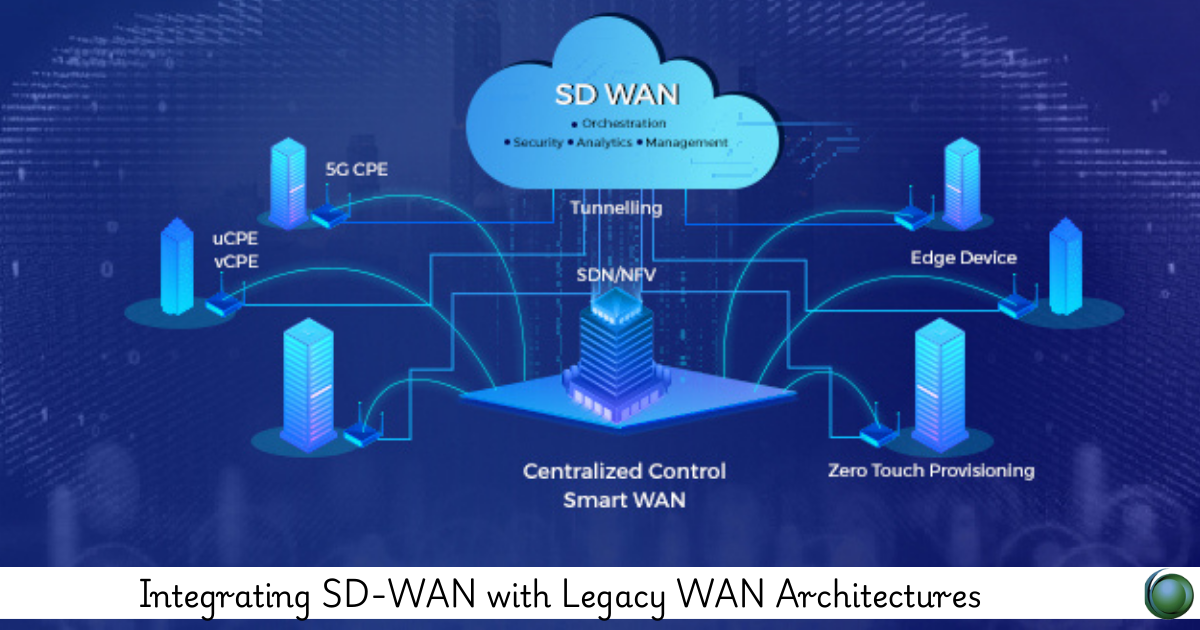Description
Introduction of Legacy WAN Architectures
As businesses increasingly adopt Software-Defined Wide Area Networks (SD-WAN) to improve flexibility, scalability, and cost-efficiency, integrating SD-WAN with legacy WAN architectures remains a common challenge. This course explores the strategies, methodologies, and best practices for effectively integrating SD-WAN with traditional networking solutions such as MPLS, leased lines, and private WAN infrastructures. Understanding this integration process ensures that enterprises can achieve seamless connectivity, optimize traffic routing, and maintain secure communications during the transition to SD-WAN.
Prerequisites
- Basic understanding of SD-WAN architecture and components.
- Familiarity with traditional WAN technologies like MPLS, VPN, and leased lines.
- Knowledge of routing protocols, network security principles, and WAN optimization techniques.
Table of Contents
1. Introduction to SD-WAN and Legacy WAN Architectures
1.1 Overview of SD-WAN Technology
1.2 Key Differences Between SD-WAN and Traditional WAN
1.3 Benefits of SD-WAN for Modern Enterprises
2. Challenges in Integrating SD-WAN with Legacy WAN
2.1 Network Compatibility Issues
2.2 Managing Traffic Across Diverse WAN Types
2.3 Security Considerations and Policy Alignment
2.4 Performance and Latency Concerns in Mixed Environments
3. SD-WAN Integration with MPLS Networks
3.1 Challenges of Integrating SD-WAN with MPLS
3.2 Coexistence Strategies for MPLS and SD-WAN(Ref: SD-WAN and Network Automation: Streamlining Operations)
3.3 Leveraging SD-WAN for MPLS Optimization
3.4 Case Study: Hybrid WAN Architecture with MPLS and SD-WAN
4. Integrating SD-WAN with VPN and Leased Lines
4.1 Integrating SD-WAN with Site-to-Site VPNs
4.2 Extending Legacy Leased Lines with SD-WAN
4.3 Strategies for Unified Traffic Routing in Hybrid WANs
4.4 Best Practices for Migrating from VPN to SD-WAN
5. Designing a Hybrid SD-WAN Architecture
5.1 Key Considerations for Hybrid SD-WAN Architecture
5.2 Designing for Redundancy and Failover in Hybrid Networks
5.3 Traffic Steering and Path Selection in Hybrid Architectures
5.4 Best Practices for Seamless Transition to Full SD-WAN
6. Security Integration: SD-WAN and Legacy Firewalls
6.1 Security Models for SD-WAN and Legacy Networks
6.2 Aligning Security Policies Between SD-WAN and Legacy WAN Solutions
6.3 Using SD-WAN for Secure Cloud and Internet Access
6.4 Case Study: Security in a Hybrid SD-WAN Environment
7. Performance Optimization in Mixed SD-WAN and Legacy Networks
7.1 Performance Challenges in Hybrid SD-WAN Architectures
7.2 Traffic Optimization for Legacy WAN and SD-WAN
7.3 Leveraging SD-WAN for Application Performance Enhancements
7.4 Real-Time Monitoring and Analytics in Hybrid Environments
8. Managing Legacy WAN Devices and SD-WAN Edge Devices
8.1 Integration of Legacy Devices with SD-WAN Edge Solutions
8.2 Managing Interoperability Between SD-WAN and Traditional Devices
8.3 Key Configuration Considerations for Hybrid Networks
8.4 Software and Hardware Requirements for Hybrid SD-WAN
9. Migration Strategy: Moving from Legacy WAN to SD-WAN
9.1 Step-by-Step Approach to Migrating to SD-WAN
9.2 Phased Migration Plans: Reducing Risk and Downtime
9.3 Tools for Monitoring the Migration Process
9.4 Post-Migration Testing and Validation
10. Case Studies: Successful SD-WAN Integration with Legacy WAN Architectures
10.1 Case Study 1: Migrating from MPLS to Hybrid SD-WAN
10.2 Case Study 2: VPN and Leased Line Integration with SD-WAN
10.3 Case Study 3: Overcoming Legacy Network Challenges with SD-WAN
10.4 Case Study 4: Achieving Cost Savings and Performance with Hybrid Networks
11. Troubleshooting SD-WAN Integration Issues with Legacy WAN
11.1 Common Integration Issues and Their Solutions
11.2 Troubleshooting Hybrid WAN Performance Problems
11.3 Identifying and Resolving Security Gaps in Hybrid Architectures
11.4 Using SD-WAN Analytics for Troubleshooting
12. Conclusion of Legacy WAN Architectures
12.1 Key Takeaways for Integrating SD-WAN with Legacy WAN
12.2 The Future of SD-WAN and Legacy Network Integration
12.3 Final Thoughts: Maximizing the Benefits of Hybrid WAN Solutions
Integrating SD-WAN with legacy WAN technologies provides businesses with an opportunity to enhance their network infrastructure while preserving existing investments. By adopting a hybrid architecture, organizations can leverage the flexibility and scalability of SD-WAN, improve application performance, and reduce costs while maintaining secure and reliable connectivity with their legacy systems. Through careful design, security alignment, and performance optimization, businesses can ensure a smooth transition to SD-WAN without disrupting critical network operations. The key to successful integration lies in choosing the right strategy, executing a phased migration plan, and continuously monitoring the network for any performance or security issues.







Reviews
There are no reviews yet.